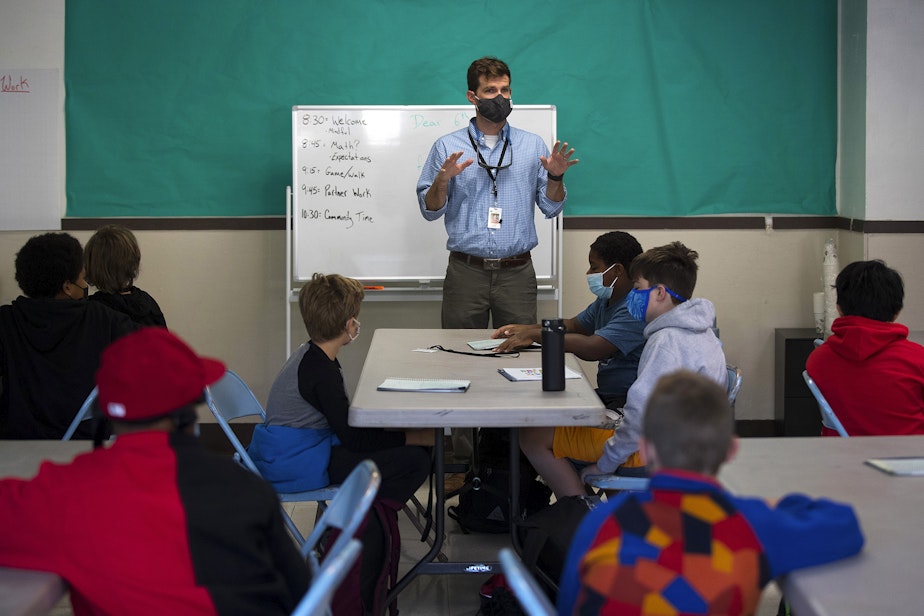Parents fret about desk distances. Expert says ventilation does more to keep kids safe

When schools brought students back into classrooms this fall, José-Luis Jiménez had a decision to make. His seven-year-old son wasn’t learning much at home. But Jiménez was worried he could get Covid at school.
And as an aerosol scientist and chemistry professor, Jiménez knows a thing or two about how airborne viruses spread. So he did what he could to take his son’s safety into his own hands. First, he bought him a high-quality (elastomeric) mask.
“His friends told him, ‘Oh, that looks really cool,’” Jiménez said. “And now it’s hard to get him to remove it. He wears it faithfully, you know, so that makes me feel a lot safer.”
Jiménez is a professor at the University of Colorado in Boulder. But parents like him, across the country, are grappling with similar questions.
In Seattle, one of the most contentious issues has been the physical distance between students. The Seattle school district only requires that students be three feet apart; that’s in line with the CDC’s latest guidelines. But, with the very contagious Delta variant causing a surge in Covid cases, a lot of parents worry that’s not far enough.
Is three feet enough?
Sponsored
According to Jiménez, three feet actually is far enough — as long as everyone’s wearing a high-quality, well-fitted mask.
Here’s why: When people aren’t wearing masks, the virus comes out of their noses and mouths like a jet, so it’s important for them to stay far apart in order to stay out of the line of fire.
But masks break up and contain that jet. So when everyone’s wearing a well-fitted mask, physical distancing is much less important: There’s no concentrated stream of virus to avoid.
Ventilation
Instead, Jiménez said, schools should focus on ventilation: getting any viral particles that escape out of the sides and tops of masks out of the room.
Sponsored
Jiménez said one of the best studies of how much ventilation is enough in a typical classroom came out of Spain. Researchers found that “in the typical classroom, you have to open three windows six inches, ideally on opposite walls or whatever,” he said.
Of course, there are many factors to consider: the size and shape of the classroom, how many students are in it, how windy it is.
Jiménez said the best way to tell if a specific classroom (or other indoor space) is ventilated enough is to measure the carbon dioxide level with an infrared monitor.
“In some cases the schools are very resistant,” he said. "So, for example, what I’ve been doing in my child’s school is his lunch bag has a hidden CO2 meter so I can see what the ventilation is in the school.”
Infrared CO2 monitors that work well start at about $100.
Sponsored
As for the air quality in Jiménez’s son’s school, “it’s not great, but it’s OK,” he said.
Filters and ... chemicals?
Whenever the ventilation isn’t great, Jiménez said schools should add filters, like HEPA filters, to remove the virus from the air. He adds that whatever schools do, they shouldn’t fall for companies that promise to disinfect the air with chemicals.
“I'm a full professor of chemistry, and I tell you: Don't try to do chemistry to kill this virus in the air,” he said. “Do physics; use physics. Use ventilation; use filtration. That's what works and doesn't have side effects.”
Overall, Jiménez said, the CDC’s new guidelines for schools are pretty good.
Sponsored
The key, he said, is to implement all of them: regular testing, quarantines, mandatory masking with high-quality masks, ventilation that’s measured and controlled, and HEPA air filters in every classroom.
If schools do all of that, he said, the exact distance between students at their desks becomes much less important.




